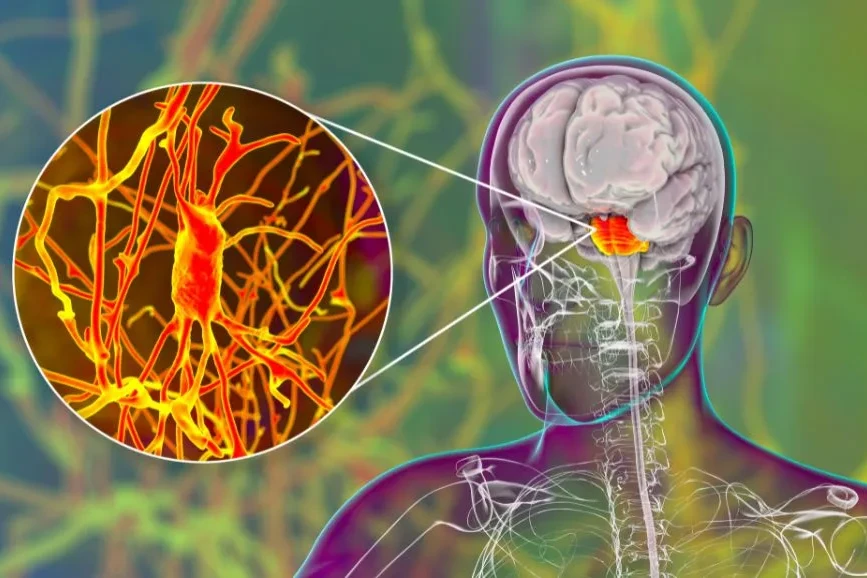Dysmetria is a serious problem with movement control. People living with it struggle to move their arms, legs, or even eyes with the right distance or timing. It’s because their brain isn’t sending the right signals.
If you’ve heard about balance disorders, tremors, or shaky hands, dysmetria might be behind it.
In this blog, you’ll learn what causes dysmetria, how to recognize the early signs, what testing looks like, and what treatments actually help.
If you’ve ever felt “off” and didn’t know why, this might be the answer you’re looking for. Keep reading. This is important.
Table of Contents
ToggleWhat is dysmetria?
Dysmetria means a person can’t properly control how far or how fast their body moves. When they reach for something, they might miss it, either overshoot or undershoot. That’s the simplest way to clarify the dysmetria definition.
The word comes from Greek: “dys” means wrong, and “metria” means measure. So, it’s literally “wrong measure.” The main issue is misjudging distance. Reaching too far (hypermetria) or not far enough (hypometria) are both possible.
It’s a type of cerebellar ataxia. That means it happens due to a problem in the cerebellum, the part of your brain that helps with coordination and balance.
There are different forms:
- Cerebellar dysmetria affects general body movement.
- Saccadic dysmetria affects how your eyes jump between objects.
- Bilateral dysmetria means it affects both sides of the body.
What are the symptoms of dysmetria?
The most common dysmetria symptoms include:
- Reaching too far or not far enough for objects
- Wobbly or unsteady walking
- Shaky hands when trying to do tasks
- Trouble judging distance
- Eye jerks or needing to refocus constantly
- Slurred speech in some cases
These symptoms happen because of a lack of coordination. The brain is unable to send clean, accurate signals to muscles. This makes daily tasks like eating, walking, or picking up a pen very difficult.
Some people experience both hypermetria (overshooting) and hypometria (undershooting). These are classic signs. Also, a cerebellar ataxia symptom like imbalance or dizziness may appear along with dysmetria.
When should you see a doctor?
You should see a doctor if you notice uncontrolled movements, hand tremors, or difficulty walking straight. These are early dysmetria symptoms.
If you’re frequently reaching the wrong spot, dropping objects, or your vision feels shaky, these signs could point to cerebellar dysmetria, especially if both sides of your body feel off, what doctors call bilateral dysmetria.
Also, if these symptoms follow a head injury, infection, or stroke, it’s urgent. The earlier you diagnose dysmetria, the better your recovery chances through dysmetria therapy exercises or other treatment.
What causes dysmetria?

Most dysmetria causes come from damage to the cerebellum. This is the section of the brain that governs the precision of movement.
Here are some of the common causes:
- Brain injury (from a fall, accident, or trauma)
- Stroke
- Multiple sclerosis
- Brain tumors
- Infections like encephalitis
- Degenerative conditions like spinocerebellar ataxia
- Vitamin B1 or B12 deficiency
- Autoimmune disorders like lupus
- Alcohol abuse
Damage to cerebellum movement control centers leads to the classic overshoot undershoot movement seen in this condition.
How is dysmetria diagnosed?
Doctors look at movement first. They check if the person is missing targets or showing shaky hand or foot control.
Here’s what usually happens:
- Medical history review
- Neurological exam
- Coordination tests like the finger-to-nose dysmetria test
- MRI or CT scans to look at the brain
- Blood tests for vitamin or enzyme levels
The goal is to see if the cerebellum is damaged and find the root cause. Since dysmetria can mimic other disorders, careful testing is key.
Is dysmetria a form of ataxia?
Yes, indeed. Dysmetria is a particular form of cerebellar ataxia. While “ataxia” refers to general coordination problems, dysmetria is about poor control of distance and timing in movement.
For instance, walking may be difficult for those who have cerebellar ataxia. But if they’re reaching and consistently missing the mark, that’s dysmetria.
So while all dysmetria is ataxia, not all ataxia is dysmetria.
What tests are used to evaluate dysmetria?
Doctors use simple, hands-on tests to check coordination. These tests help pinpoint where the issue is.
Here are the most common ones:
- Finger-to-nose test: You’re asked to touch your nose and then the doctor’s finger again and again. People with dysmetria often miss the target or tremble.
- Heel-to-shin test: You drag one heel down the shin of the opposite leg. Trouble doing this smoothly points to cerebellar dysmetria.
- Imaging: MRI scans to view brain damage
- Genetic testing: For inherited forms
These tests help confirm if it’s a neurological coordination disorder.
Can dysmetria be treated or managed?
There’s no permanent cure, but there are ways to improve life with dysmetria. The treatment focuses on improving coordination and independence.
Most people benefit from dysmetria therapy exercises led by physical or occupational therapists. These exercises train the brain to control movements better and reduce shaky actions. Tools like weighted utensils or walking aids can also help.
If speech or eye movements are affected, therapy is tailored for that too. Since cerebellar dysmetria often occurs with bilateral dysmetria or saccadic dysmetria, management plans are highly personalized.
The key is early diagnosis and consistent therapy for the best results. Doctors focus on reducing symptoms and helping people live better, safer lives.
Living with dysmetria: What to expect
Living with dysmetria means adjusting routines. It might take more time to eat, write, or get dressed. But with the right support, people can stay independent.
Here’s what to expect:
- Some symptoms might stay stable. Others may slowly get worse.
- Therapy can make everyday life easier.
- Falls are a risk. Making the home safer helps.
- Some people may need help driving or using electronics.
Support groups and mental health help are really important as well. It’s not only physical to live with dysmetria; it’s also emotional.
Key takeaways on dysmetria
- Dysmetria is a condition that complicates the control of movement distance or speed.
- It’s caused by damage to the cerebellum.
- Symptoms include overshooting or undershooting targets, unsteady walking, and shaky hands.
- It’s often part of cerebellar dysmetria, a type of ataxia.
- Diagnosis includes simple movement tests and brain scans.
- There’s no cure, but therapy helps people stay active and independent.
Dysmetria FAQs
What part of the brain is affected in dysmetria?
Dysmetria occurs due to damage in the cerebellum, the brain’s movement control center. It’s responsible for smooth, accurate motion and balance, and its damage causes misjudged movements.
Is dysmetria always permanent?
Not always. If caused by treatable issues like vitamin deficiency or infections, dysmetria may improve. But if it’s due to stroke or degeneration, it might be lifelong but manageable.
What’s the difference between dysmetria and ataxia?
Ataxia is the umbrella term for coordination issues. Dysmetria is a specific kind of it, focusing only on incorrect movement distance or timing like overshooting or undershooting.
Can dysmetria occur after a stroke?
Yes, especially if the stroke damages the cerebellum. Post-stroke patients may develop dysmetria as part of their motor function complications, often seen with bilateral dysmetria or gait issues.
Is dysmetria common in multiple sclerosis?
Yes. MS damages the brain and spinal cord, especially the cerebellum. That makes dysmetria, particularly saccadic dysmetria and hand control problems, common symptoms in many MS cases.
What is the finger-to-nose test?
It’s a basic exam used to check coordination. People with dysmetria can’t smoothly touch their nose and a target, showing tremors, overshooting, or missed movements.
Can dysmetria affect speech or vision?
Yes. In severe cerebellar dysmetria, speech may become slurred. Eyes can also be affected, leading to saccadic dysmetria where vision jumps or doesn’t align correctly.
Can children have dysmetria?
Yes. Children with genetic conditions, cerebral palsy, or infections like encephalitis may develop dysmetria. Early signs include clumsy movements and trouble hitting or reaching objects accurately.
About The Author

This article is medically reviewed by Dr. Chandril Chugh, Board-Certified Neurologist, providing expert insights and reliable health information.
Dr. Chandril Chugh is a U.S.-trained neurologist with over a decade of experience. Known for his compassionate care, he specializes in treating neurological conditions such as migraines, epilepsy, and Parkinson’s disease. Dr. Chugh is highly regarded for his patient-centered approach and dedication to providing personalized care.
→ Book a consultation to discover which remedies suit your needs best.




